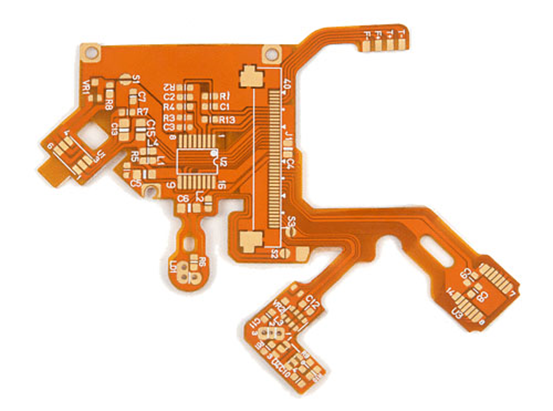Flexible PCB assembly
Posted:08:28 PM January 10, 2020
writer: NextPCB
Flexible PCB assembly or FPC assembly is a process that is mounting electronic components on flexible plastic substrates such as polyimide, PEEK, or a transparent conductive polyester film.

With the development of electronic products to be short, thin, and light, the integration and miniaturization of electronic components become the trends. And the flexible PCBs came into being and made the circuit boards with unique shapes and sizes. Good flexibility, space-saving, excellent performance are the main advantages of flexible PCBs.
Due to the characteristics, the flexible boards cannot perform surface mounting technology(SMT) like rigid boards. The process of flexible assembly is quite technical. There are two assemble ways of FPC. One is reel to reel(RTR); this way needs a highly specialized production line equipment and high input cost. So, RTR is suitable for substantial batch FPC production. Another assemble way is fixture attachment method, and there are some process points need to be noted as below:
lPre-baked
The flexible board material is easy to get damp. When the wet board after high-temperature welding, there will be a foaming layer and resulting in scrap. Therefore, PCB manufacturers usually require the flexible board supplier to use vacuum packaging for the incoming materials. But vacuum packaging is not foolproof, and it is best to pre-baked the flexible boards before assembling. After baking, the FPC must be cooled to room temperature before it can be put into production. Otherwise, the hot FPC will cause the solder paste to collapse.
lFPC attachment and fixing
For the single FPC assembly, usually manual assembled. For the multiple varieties and small batch production, a fixture is needed. The method of attaching and fixing varies according to different fixture designs. Eliminating the need for special products and considering operability and ease of maintenance, the fixture usually is designed into two parts: the base and the pallet. The base is used to fix the pallet and position the FPC. The pallet plays the role of fixing FPC. The design and manufacture of the fixture directly affect the production straight-through rate of the FPC.
lThe solder paste printing of FPC
Although the FPC becomes a hardboard(PCB) after being fixed, the surface of the FPC may still be uneven because of the deformation of the FPC itself, the thickness of the attached material, the reinforcement plate, or the thickness of the back adhesive. The problems of continuous tin, less tin, and more tin will occur when the FPC is not flat.
lFPC assembly
When the unevenness of the FPC is solved, the assembly is very simple, and it is not much different from the rigid PCB. However, because there are few components on FPC, FPC must be assembled by the panel, so how to use the SMT machine efficiently is the main problem of FPC assembly.
Flexible PCBs are in rapid development and play an important role in lead-free operations. In the next few years, smaller, more complex, and more expensive flexible circuits will require newer methods of assembly. PCB manufacturers or PCB prototype manufacturers should utilize the technological advantages to keep pace with computers, telecommunications, consumer demands, and the development of the markets.
 PCB Assembly
PCB Assembly
 Layer Buildup
Layer Buildup
 Online Tools
Online Tools
 PCB Design-Aid & Layout
PCB Design-Aid & Layout
 Mechanics
Mechanics
 SMD-Stencils
SMD-Stencils
 Quality
Quality
 Drills & Throughplating
Drills & Throughplating
 Factory & Certificate
Factory & Certificate
 PCB Assembly Factory Show
Certificate
PCB Assembly Factory Show
Certificate

